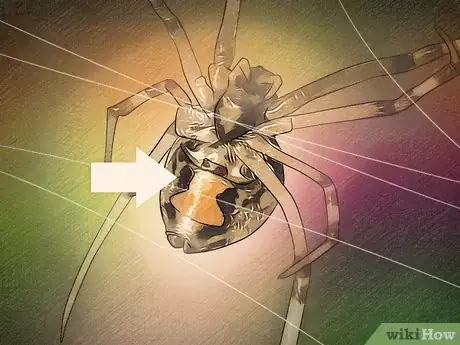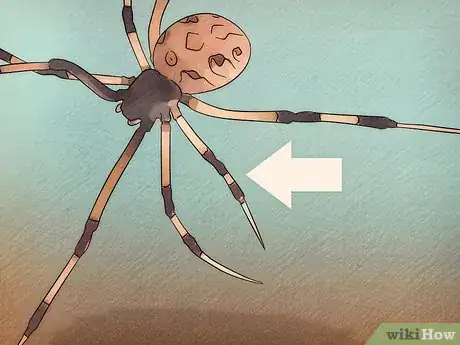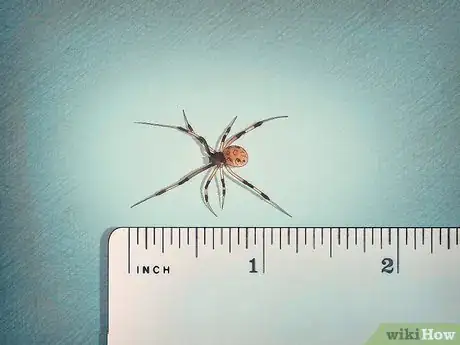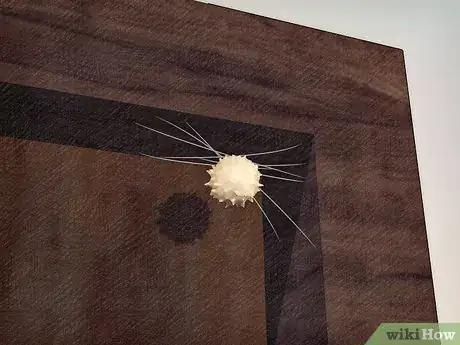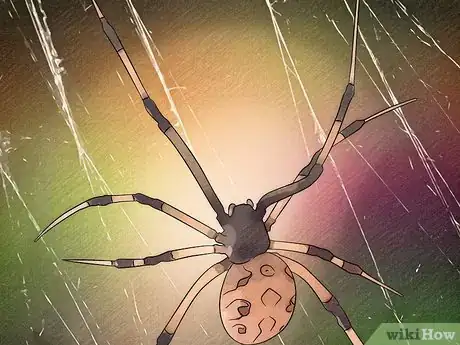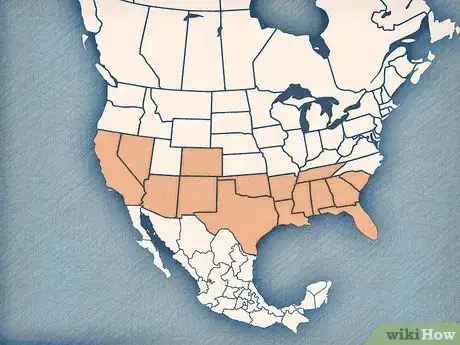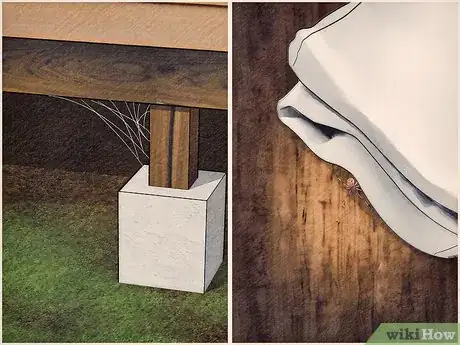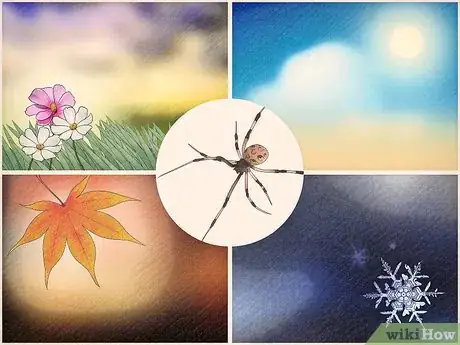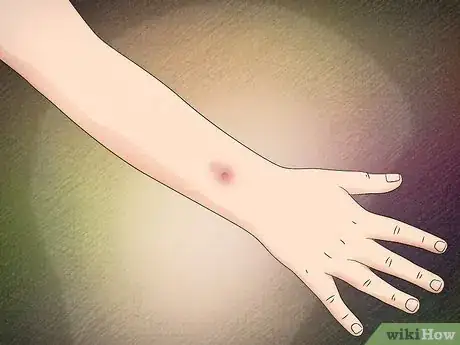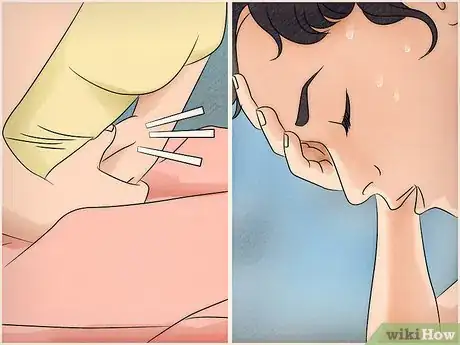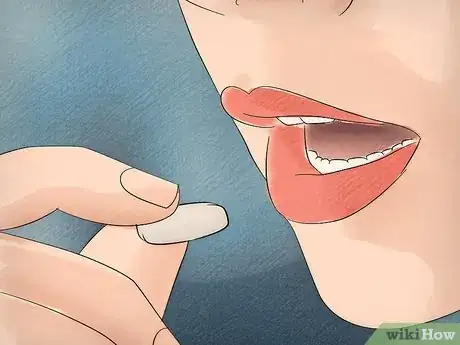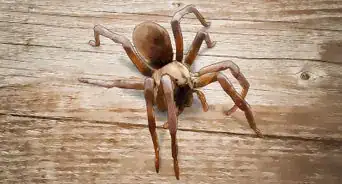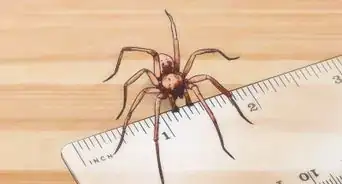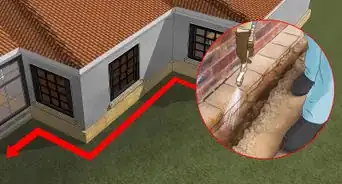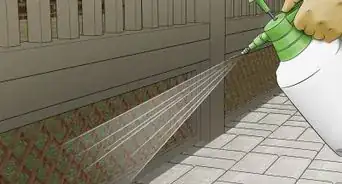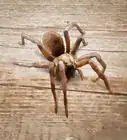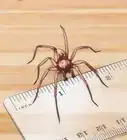wikiHow is a “wiki,” similar to Wikipedia, which means that many of our articles are co-written by multiple authors. To create this article, 21 people, some anonymous, worked to edit and improve it over time.
There are 15 references cited in this article, which can be found at the bottom of the page.
wikiHow marks an article as reader-approved once it receives enough positive feedback. This article received 22 testimonials and 88% of readers who voted found it helpful, earning it our reader-approved status.
This article has been viewed 392,465 times.
Learn more...
The brown widow spider (Latrodectus geometricus) is native to South Africa and was first discovered in the United States in 1935. This spider is also commonly known as the grey widow, brown button and geometric button spider. While it is true that brown widow spiders are highly venomous to their prey, they are very timid and rarely bite humans; when they do bite, they don’t inject all their venom making them less harmful. Use this article to learn how to identify a brown widow spider and what to do when bitten by one.
Steps
Identifying a Brown Widow Spider
-
1
-
2Look for the hourglass marking. Like black widows, brown widows have a very distinctive hourglass marking on the underside of its abdomen. This marking, however, is yellowish to bright orange.Advertisement
-
3Take note of any dark bands on the legs. The front pair will be longer than the rest.[3]
-
4Check the size. The females will be 1 to 1 ½ inches (centimeters) long, including the legs. The males will be ½ to ¾ of an inch (centimeters) long.
-
5Search for any round, spiky egg sacs. Brown widow spiders can look similar to certain species of black widow spiders, and their brown color can make them hard to distinguish from other spiders. Knowing what a brown widow's egg sac looks like can help you identify it with more certainty. Here are some things to look for:[4] [5]
- Size: ½ inch (centimeters)
- Color: Ivory, tan, or yellow
- Shape: Round and spiky
- Location: On the web
-
6Look for cobwebs. Brown widow spider webs look different from the traditional lace-like spider web. Instead, they are three-dimensional (instead of flat) and cobwebby.[6]
Recognizing Brown Widow Spider Habitats
-
1Know if brown widow spiders live in your state. Brown widow spiders are typically found in the southern part of the United States. Here is a list of the states that they can be found in:[7] [8]
- Alabama, Arizona, Arkansas
- California (particularly southern California), Colorado
- Florida, Georgia, Hawaii
- Louisiana (particularly New Orleans), Mississippi
- Nevada, New Mexico
- Oklahoma, South Carolina
- Tennessee, Texas
-
2
-
3Brown widow spiders prefer secluded areas. Like most spiders, brown widow spiders prefer dark, less-frequented places, such as woody areas. They can also be found in urban areas and around your home and backyard. Here are some places where you are likely to find brown widow spiders:[11]
- Around garden, including under railings and inside empty flower pots
- In closets, attics, and garages, including inside boxes and under handles
- Around your house, particularly under eaves, and behind window shutters
- Underneath furniture, both patio and indoor
- Within folds of linen and clothing
- Inside shoes
-
4Know when brown widow spiders come out. Unfortunately, brown widow spiders are active during all four seasons: spring, summer, fall, and winter.[12]
Treating Brown Widow Spider Bites
-
1Be able to identify a brown widow bite. Fortunately, brown widow spiders are not able to inject as much venom as some other species, so their bites are rarely serious. Here is what you should expect from a brown widow bite:[13]
- The bite hurts or stings a little
- There is a small, red mark where you got bitten
-
2Know when to see a doctor. Sometimes, the body can have a far more severe reaction to a spider bite. If you experience any of the following symptoms, visit your doctor immediately:[14] [15]
- Trouble with breathing or keeping conscious
- Muscle cramps or tremors
- Sweating
- Nausea and vomiting
- Severe pain
- Infections at the bite site, such as rashes, pus, or ulcers
-
3Take care of the bite by cleaning it and applying an ice pack. Clean the bite using soap and warm water; be sure to rinse it well. Elevate the bitten area, if possible, and place an ice pack over it; you can also use a cloth soaked in cold water. Washing the bite will help prevent infection while keeping it cool will keep the swelling down.[16]
-
4Take some over-the-counter medications. Spider bites can be itchy and uncomfortable, and brown widow bites are no exception. If you get bitten, consider taking some medication for it:
- Consider taking a pill, such as an acetaminophen, antihistamine, or ibuprofen.[17]
- You can also use an anti-itch or anesthetic spray. Try to choose one that has benzocaine in it; this will help reduce the itching and pain.[18]
- If the bite is red and won't stop itching, try an anti-itch cream, such as an hydrocortisone cream or a calamine cream.[19]
Community Q&A
-
QuestionAre there widow spiders in the UK?
 Community AnswerNo. Brown widows live in more tropical places. The UK is way too cold for most tropical spiders.
Community AnswerNo. Brown widows live in more tropical places. The UK is way too cold for most tropical spiders. -
QuestionWill I die if bitten?
 Community AnswerThere are no documented cases of deaths from a brown widow. Even though they have a similar venom to the black widow, they cannot inject nearly as much, and their bites are much weaker, reducing the chance that the venom spreads.
Community AnswerThere are no documented cases of deaths from a brown widow. Even though they have a similar venom to the black widow, they cannot inject nearly as much, and their bites are much weaker, reducing the chance that the venom spreads. -
QuestionAre there brown widow spiders in Indiana?
 Community AnswerThat's not their typical habitat. However, anyone moving there or visiting from a more tropical area could accidentally bring one with them.
Community AnswerThat's not their typical habitat. However, anyone moving there or visiting from a more tropical area could accidentally bring one with them.
Warnings
- A brown widow spider is quite shy and it will most likely avoid any contact with you. This spider tends to retreat from humans and will remain very still until it senses the threat is gone. However, if you provoke a brown widow, it will probably bite you.⧼thumbs_response⧽
References
- ↑ University of California, Davis, Black Widow and OtherWidowSPiders
- ↑ Clemson University, Brown Widow Spiders
- ↑ Spiders, Latrodectus geometricus (Brown Widow Spider)
- ↑ Clemson University, Brown Widow Spiders
- ↑ University of California, Riverside, Identifying Brown Widow Spiders
- ↑ Venom Byte, Brown Widow
- ↑ University of Florida, Brown Widow Spiders
- ↑ Spiders, Latrodectus geometricus (Brown Widow Spider)
- ↑ Pest Net, Brown Widow
- ↑ University of California, Riverside, Brown Widow Spider
- ↑ University of California, Riverside, Brown Widow Spider
- ↑ Spiders, Latrodectus geometricus (Brown Widow Spider)
- ↑ University of California, Riverside, [spiders.ucr.edu/brownwidow.html The Brown Widow in Southern California]
- ↑ Mayo Clinic, Spider Bites: First Aide
- ↑ WebMD, Insect Bites and Stings and Spider Bites - Check Your Symptoms
- ↑ Mayo Clinic, Spider Bites: First Aide
- ↑ Mayo Clinic, Spider Bites: First Aide
- ↑ WebMD, Insect Bites and Stings and Spider Bites - Home Treatment
- ↑ WebMD, Insect Bites and Stings and Spider Bites - Home Treatment
- ↑ Pest Net, Brown Widow
- ↑ Pest Net, Brown Widow
- ↑ Pest Net, Brown Widow
- Lorus and Margery Milne, Audubon Society Field Guide to North American Insects & Spiders, (New York, NY: Alfred A. Knopf, Inc. 1980)
- Ken Preston-Mafham, Spiders, The new compact study guide and identifier, (Edison, NJ: Chartwell Books, 1998)
- Arthur V. Evans, National wildlife Federation Field Guide to Insects and Spiders, (New York, NY: Sterling Publishing Company, 2008)
About This Article
To identify a brown widow spider, start by seeing if it’s brown, tan, and gray with a mottled or spotted pattern, which is the spider’s typical coloring. Additionally, check for dark bands on the spider’s legs, and front legs that are longer than the others. You should also try to get a look at the underside of the spider’s abdomen, which is marked by an hourglass shape that’s yellowish to bright orange. It can also help to look for the spider’s web, which will appear 3-dimensional and cobwebby, rather than flat and lacy, if it belongs to a brown widow. To learn how to treat a brown widow spider bite, scroll down!

